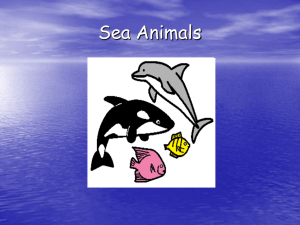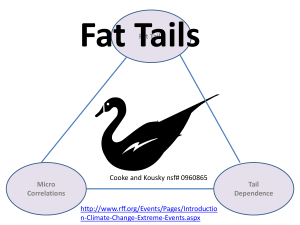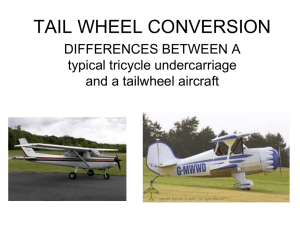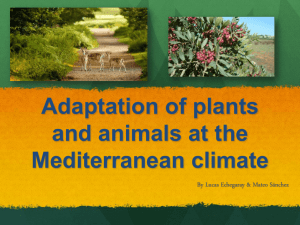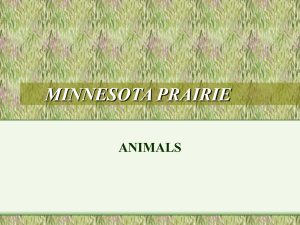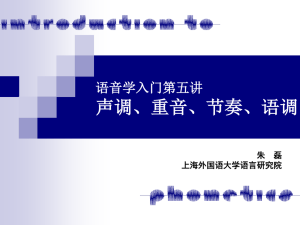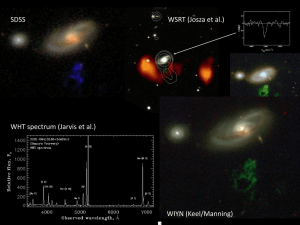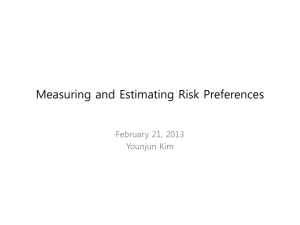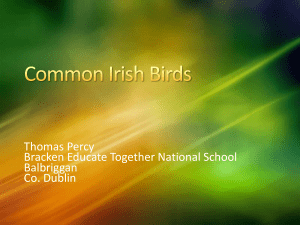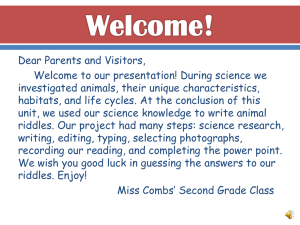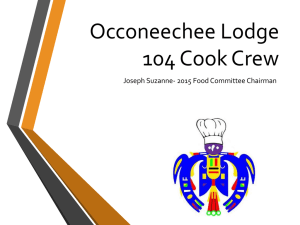Tail Damage Prevention
advertisement
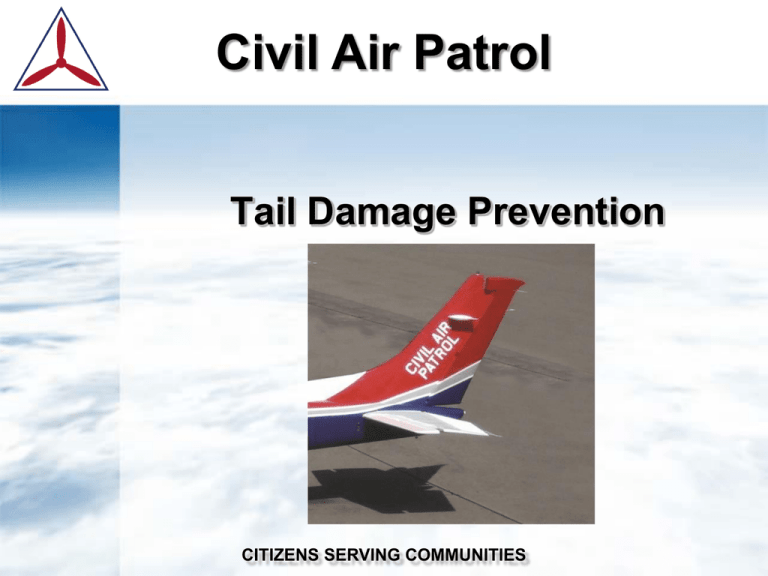
Civil Air Patrol Tail Damage Prevention CITIZENS SERVING COMMUNITIES Tail Damage Prevention Overview Tail Strike Definition Preflight Inspection Surface Conditions Soft Taxi Ways & Runways Over-rotation During Takeoff Over-rotation During Landing Post Flight Inspection CITIZENS SERVING COMMUNITIES Tail Damage Prevention Definition A “tail strike” is when the tail of an aircraft hits the runway during high speed actions like take off or landing. May cause injury and is always expensive! Tail Strike Video CITIZENS SERVING COMMUNITIES Tail Damage Prevention Preflight Inspection Inspect the underside of the aircraft. Overall condition – paint, dents, etc. Inspect tail tie-down ring – scrapes / grass Notify CAP personnel if undocumented damage is found; prior to flight. CITIZENS SERVING COMMUNITIES Scraped Tie-down Ring Tail Damage Prevention Surface Wind Conditions Departing the prepared surface – Avoid it! X-winds contribute to prop & tail strikes. May cause directional control issues. Excessive or unexpected x-winds may drive aircraft off the prepared surface leading to possible prop & tail damage. Be aware and prepared! CITIZENS SERVING COMMUNITIES Tail Damage Prevention Soft Taxiways & Soft Runways Operate on dry soft surfaces when possible. Potential for wheels to sink down during landing & taxi when the surface is wet, resulting in bounces causing propeller and/or tail strikes. CITIZENS SERVING COMMUNITIES Tail Damage Prevention Soft Taxiways & Soft Runways (Continued) FOD hazards – rocks, sticks, trash, etc. Loose FOD can fly up from prop wash or landing gear causing damage to tail section. CITIZENS SERVING COMMUNITIES Tail Damage Prevention Over-rotation During Takeoff Rotate to the recommended pitch angle. Maintain an established takeoff attitude. Avoid sudden flight control deviations. CITIZENS SERVING COMMUNITIES Tail Damage Prevention Over-rotation During Landing Over-rotation is a major cause of tail strikes. Maintain a safe sink rate during approach. Set established landing attitude and avoid excessive pitch angle in landing flare. Don’t try to salvage a bad landing. Go around when unsafe conditions occur (unpredictable x-winds, high sink rate, bounce, ballooning, bad feeling, etc.) CITIZENS SERVING COMMUNITIES Tail Damage Prevention Post-flight Inspection Inspect the Underside of Aircraft. Overall condition – paint, dents, etc. Inspect tail tie-down ring. scrapes, bent, grass, etc. Notify CAP personnel and document if any damage is found during the post-flight inspection. CITIZENS SERVING COMMUNITIES Tail Damage Prevention Summary Tail Strike Definition Preflight Inspection Surface Conditions Soft Taxi Ways & Runways Over-rotation During Takeoff Over-rotation During Landing Post Flight Inspection CITIZENS SERVING COMMUNITIES Tail Damage Prevention Questions Please be sure to utilize the local expertise in your chain of command to help with aviation related questions; your Unit, Wing, and Region Stan/Eval Officers (DOV) are a wealth of knowledge and are ready to assist. CITIZENS SERVING COMMUNITIES Tail Damage Prevention Acknowledgments Many thanks to the following for their input into this presentation: Colonel Michael Jay Murrell – Deputy Chief of Staff for Operations Colonel Carlton Sumner – National Stan/Eval Officer Col Alex Kay – National Chief of Safety Mr. John Desmarais, Sr. – Director of Operations, CAP National Headquarters Joe Piccotti – Chief of Aircraft Operations, CAP National Headquarters Mr. Axel Kreimeier – National Safety Team Liaison, CAP National Headquarters Ms. Sylvia Wrigley – World Renowned Pilot & Aviation Author University of North Dakota – Tail Strike Avoidance Video Video Reference Web Link: http://aviation.wonderhowto.com/howto/avoid-dangerous-runway-tailstrikes-cessna-172-skyhawk-aircraft329375/ And, all of those who supported this effort to enhance the safety of flight ops. CITIZENS SERVING COMMUNITIES
